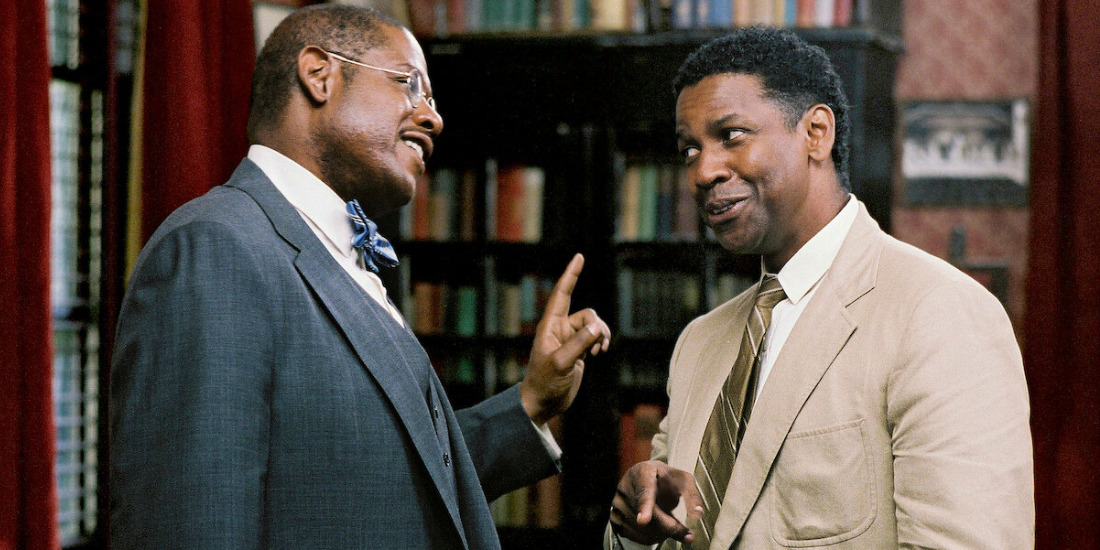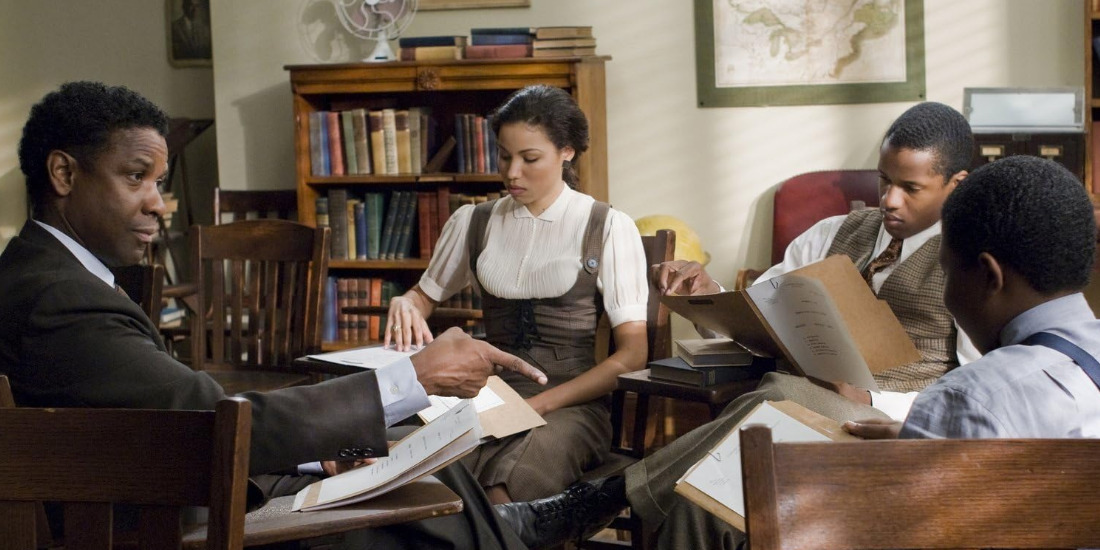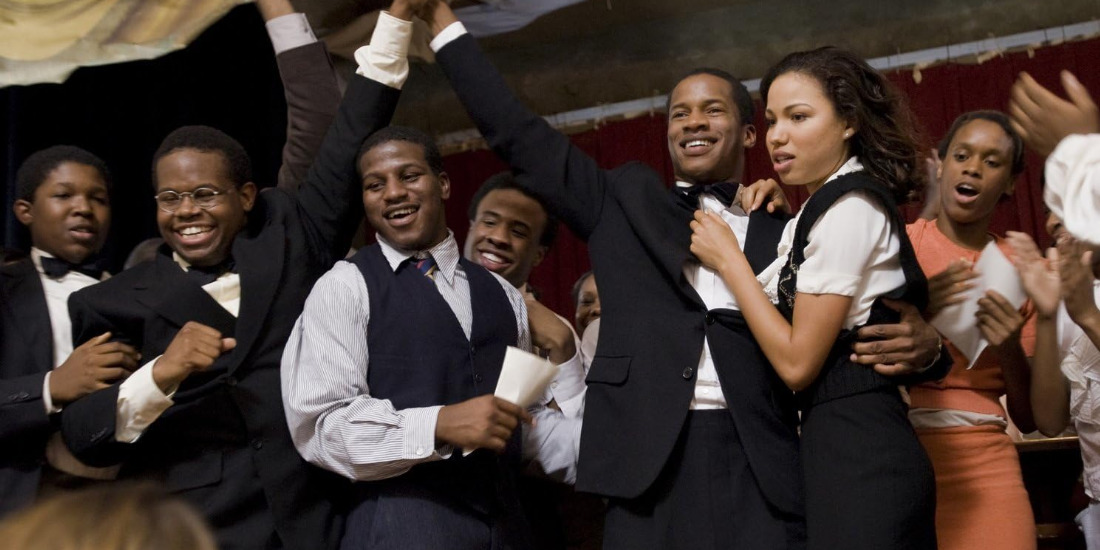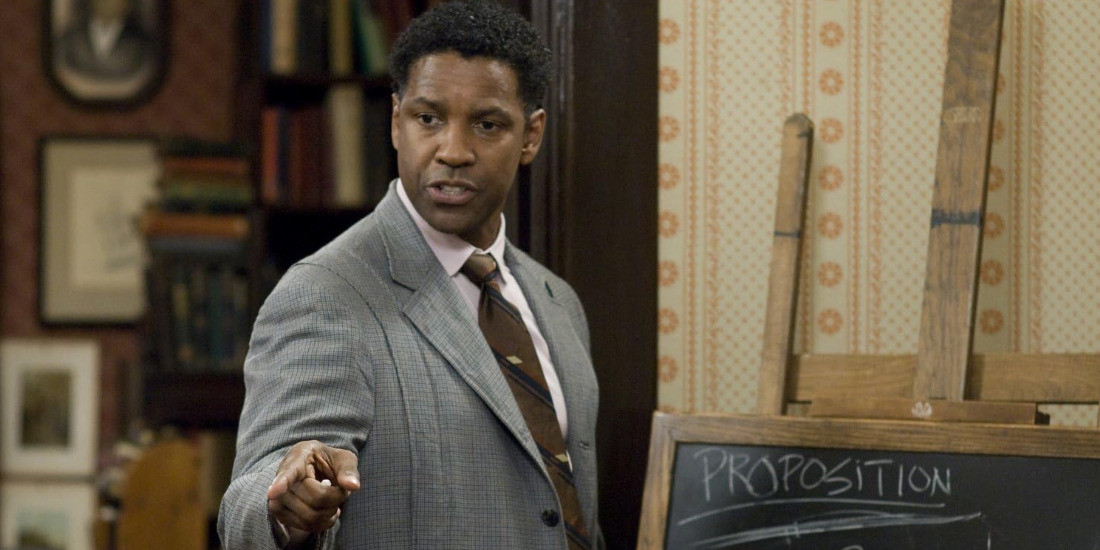‘The Great Debaters,’ directed by its lead actor, Denzel Washington, is a drama film revolving around engaging academia within a socially strife time period. Set in 1935, Texas, the film follows an accomplished professor, Melvin B. Tolson, who coaches the Wiley College Debate team. With his guidance, the debaters, including Samantha, Henry, and James, undertake an almost undefeated streak even in the face of parental concern toward Melvin’s radical politics. Thus, undeterred by the numerous complications in their path, Wiley’s Debaters blaze their own path, which leads them to a historic competition against the students at Harvard University.
The film depicts an uplifting tale about victory and adversity while highlighting the cruel reality of its period setting, most starkly prevalent within its depiction of racial politics and inequalities. As such, the story remains ripe with social messaging and historical reminders that infuse the film with a sense of real-life relevancy. However, how much reality is actually behind the film? SPOILERS AHEAD!
Melvin B. Tolson: A Real Professor With a Memorable Legacy
‘The Great Debaters’ has substantial roots in reality, especially in its depiction of Melvin B. Tolson, the film’s guiding light that leads its protagonists to their fateful triumphs. The film found its inception through an eponymous article published in a magazine, American Legacy, by a freelance writer, Tony Scherman. Screenplay writer Robert Eisele decided to employ the article as his starting ground for the film after his friend Jeffrey Porro brought it to his attention.

The article talked about Tolson, a renowned African-American poet, often considered one of the best of his time and beyond, who inevitably became a person of interest to Eisele. “I was aware of Melvin B. Tolson’s poetry since I’m a published poet myself, but I had no idea he had trained on his debate team of the 1930s—the students who would become the Civil Rights leaders of the 1950s and 1960s,” the screenplay writer recounted in the film’s production notes.
Thus, moved by the premise of Tolson’s career as a debate coach at Wiley College, Eisele penned the storyline as depicted in the film. In real life, Tolson’s involvement with the debate team began in 1924, when the man organized the college’s first debate team. During the ten years under his wing, the team maintained a near-perfect record, with only one loss under their belt.
Furthermore, six years into their establishment, Tolson’s debate team also started competing against white debate teams. The same increased Wiley students’ success and reflected the professor’s own efforts to bettering race relations within the nation. As depicted in the film, Tolson was also reportedly involved in Texas’ socio-political landscape as a radical. Likewise, to increase Melvin’s realism, Washington, who portrays Tolson’s on-screen counterpart in the film, also researched the real-life professor by speaking to his students and family members.
According to The New York Times, Henrietta Bell Wells, one of Tolson’s real-life debaters who was involved in the mentioned research process, referred to the man as “her crabbiest and best teacher.” Thus, even though certain differences remain between the stories of the real-life Tolson and Washington’s Melvin, the latter definitely harvests significant inspiration from the former.
Ultimately, Tolson’s legacy involves many more accomplishments not depicted within the film, with his award-winning poetry inviting particular significance. Nevertheless, within the parameters of Melvin Tolson, as a debate coach, the film strives to present an authentic image while still employing creative liberty as necessary.
Wiley College’s Real-Life Debaters
Although the film sticks close to reality in terms of its depiction of Melvin Tolson, it furthers from historical accuracy when it comes to the rest of the characters. As the key students within Melvin’s debate team, Samantha Booke, Henry Lowe, James Farmer Jr., and Hamilton Burgess have varying roots in reality. Of the four characters, only James Farmer Jr. is explicitly based on an actual individual, while the other three characters mine loose inspirations from real life.

For instance, despite Henry Lowe and Hamilton Burgess’ seeming lack of real-life counterparts, two students sharing their first names, Henry Heights and Hamilton Boswell, were reportedly a part of the Wiley College Debate Team. Nevertheless, even though Lowe and Burgess were possibly molded after Heights and Boswell’s images, no direct connection remains between the characters and their real-life inspirations save for their position as Melvin Tolson’s students.
Likewise, Samantha Booke, a loose interpretation of Henrietta Bell Wells, shares the latter’s status as the first female debater on the team. Yet, unlike Booke, Wells only debated for a year after her initial appointment in 1930. As a result, Wells’ real experiences and the film’s timeline fail to match up. Much of the same is the case for James Farmer Jr., whose real-life counterpart joined Tolson’s team around 1934 at the age of fourteen.
Therefore, the assembly of these characters and their storylines remains a fictional creative liberty undertaken by the film to enhance the story’s impact through riveting characters in equally fascinating situations. As such, the same becomes the source behind one of the most persistent critiques ‘The Great Debaters’ can receive regarding its historical accuracy.
Wiley College Vs. Harvard University: A Fictional Detail
Despite its origins in a true story, the film’s climactic final act, Melvin’s Debaters’ conclusive confrontation against Harvard students at a competition, remains a fictional plot point. In real life, the Wiley College Debate Team didn’t enter a debate with Harvard University during the 30s. Instead, in 1935, the Wiley students competed against national champions, the University of Southern California, which resulted in an almost comparable victory.

Therefore, Wiley’s debate against USC marked its momentous peak in a streak of debates against white colleges, as opposed to the film’s version, including Harvard University. It’s likely that the film simply employs Harvard University as its final giant for Melvin’s pupils to take on for the institution’s highly prestigious reputation and social impact.
While the switch-up amplifies the impact of the character’s journey in some way, it also comes with its fallacies by lessening the film’s ties to reality. Consequently, the final sequence cements the film’s dramaticized quality, rendering it an interpretation solely inspired by reality rather than replicating it. Nevertheless, the film’s roots in real life remain strong, even if clouded by artistic freedom that the film’s creators amply utilized.
Read More: Best Student-Teacher Movies on Netflix


You must be logged in to post a comment.